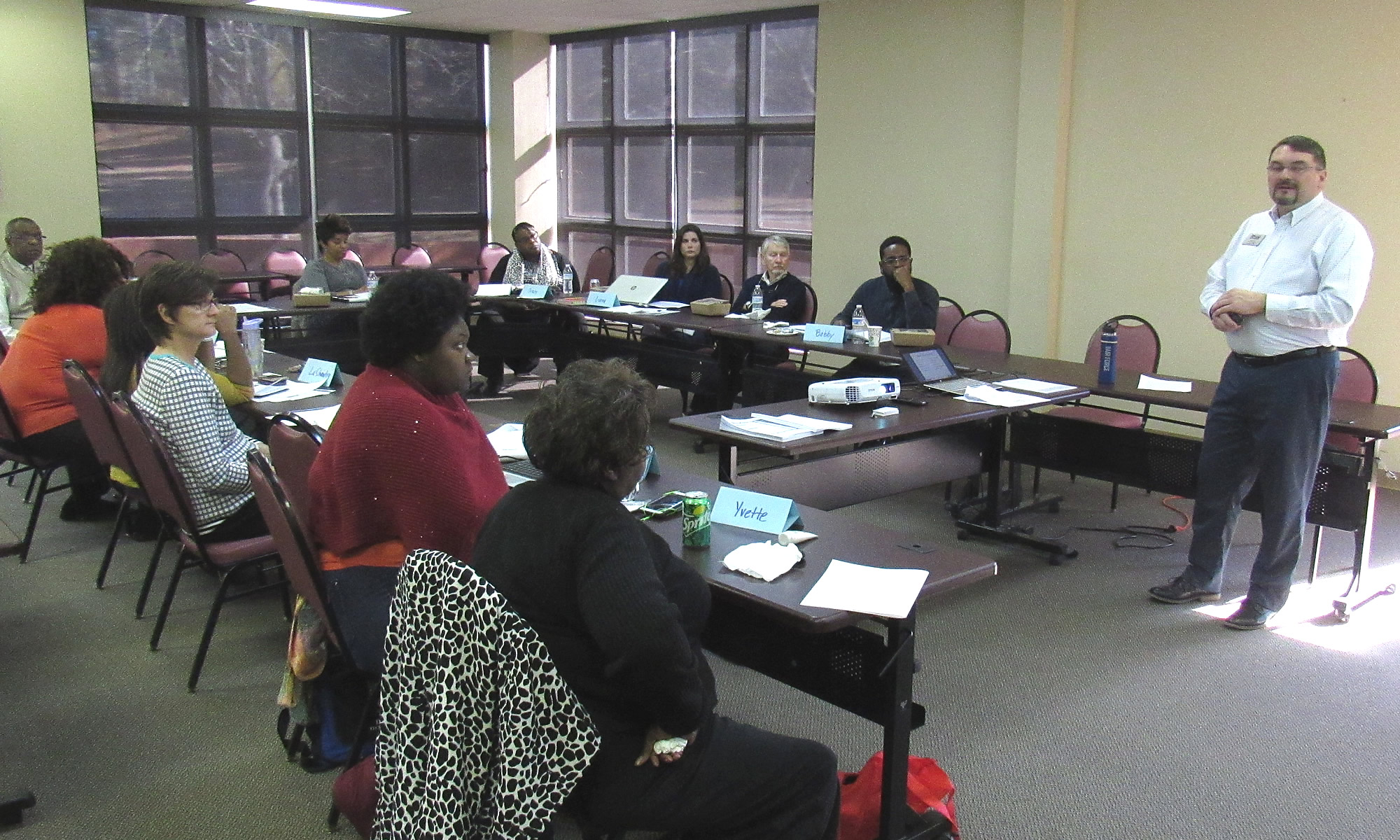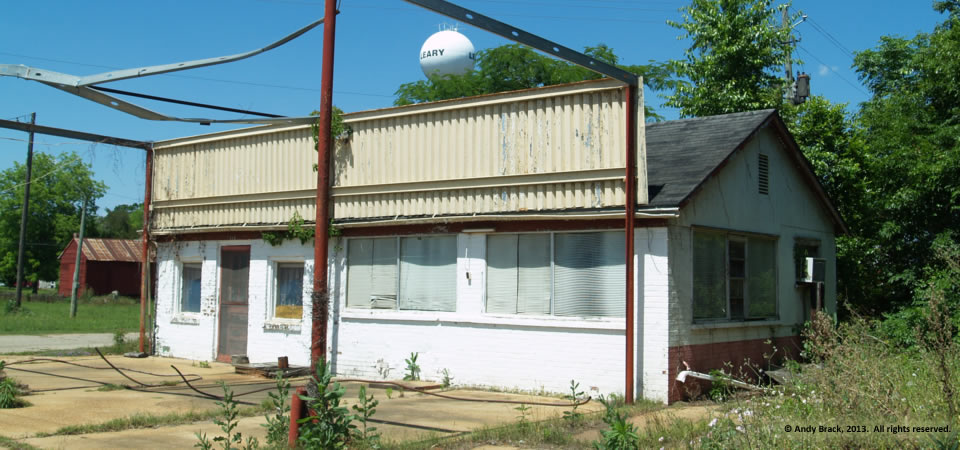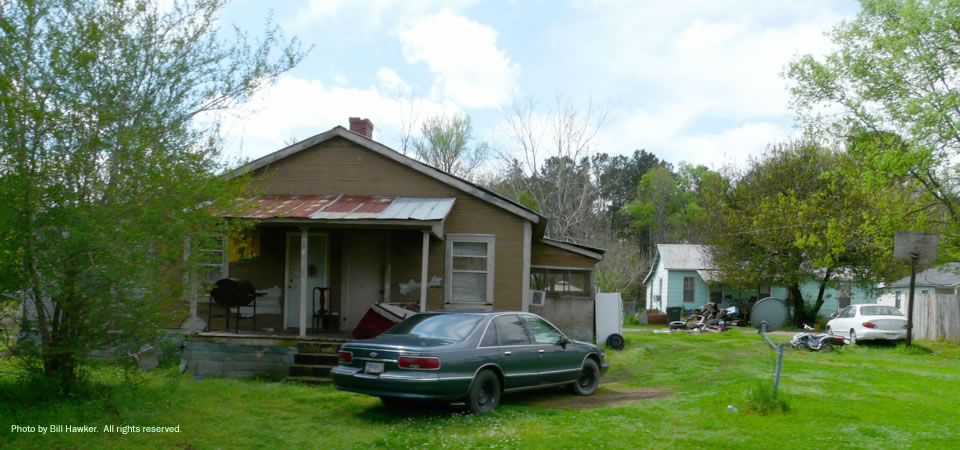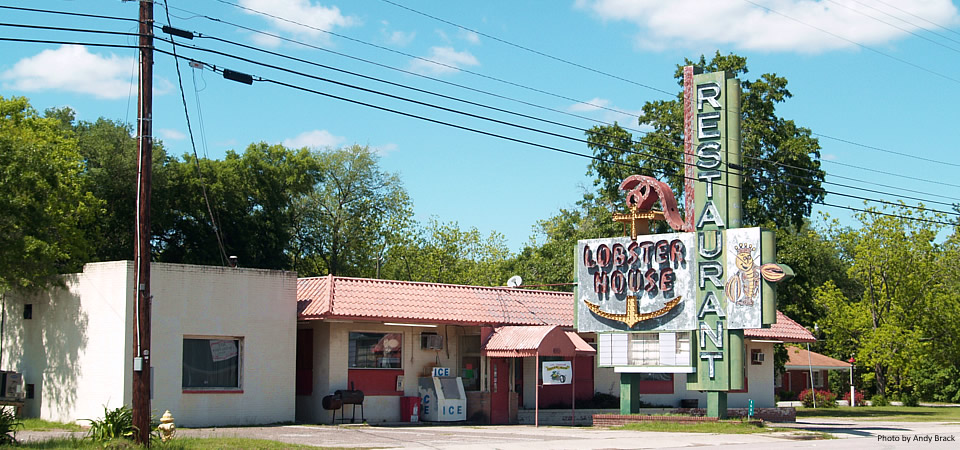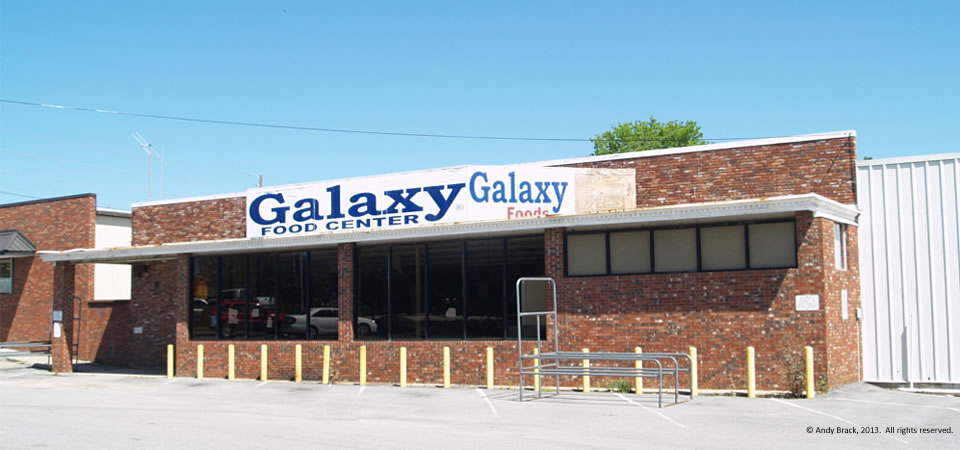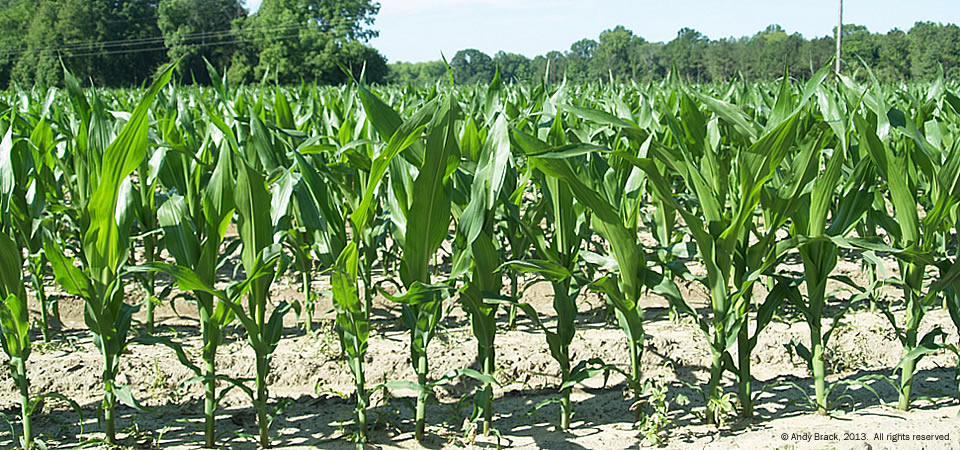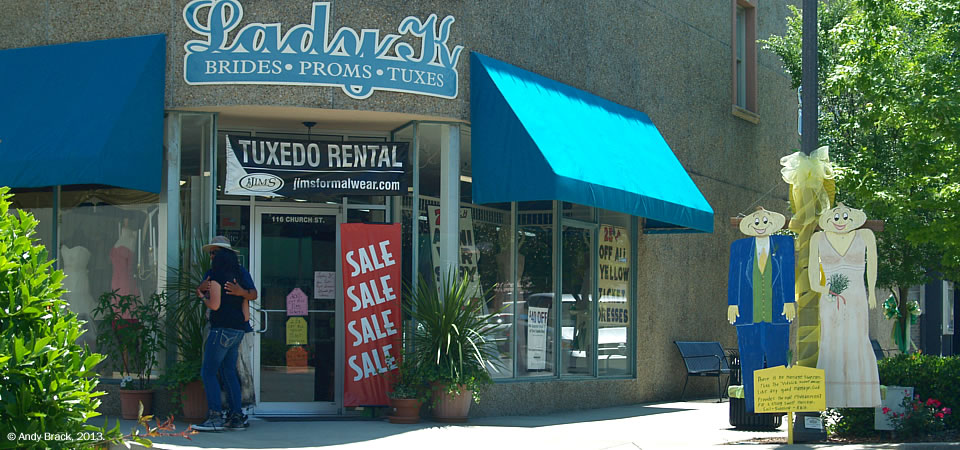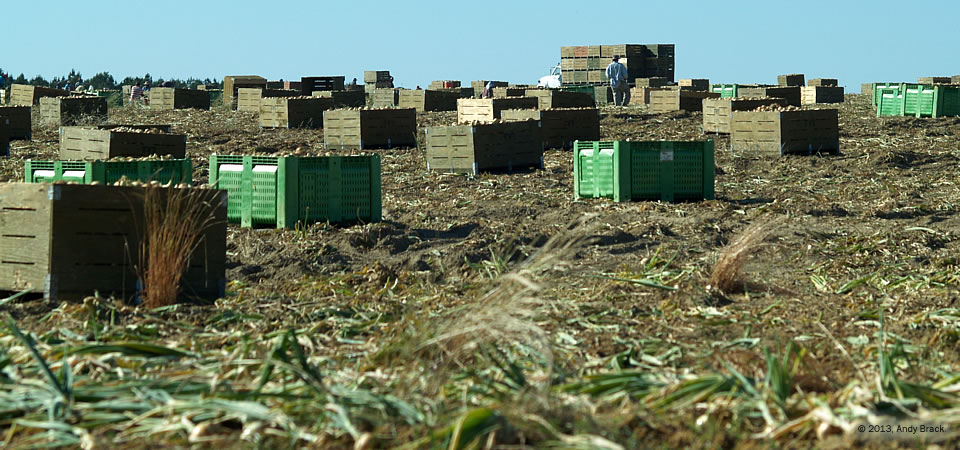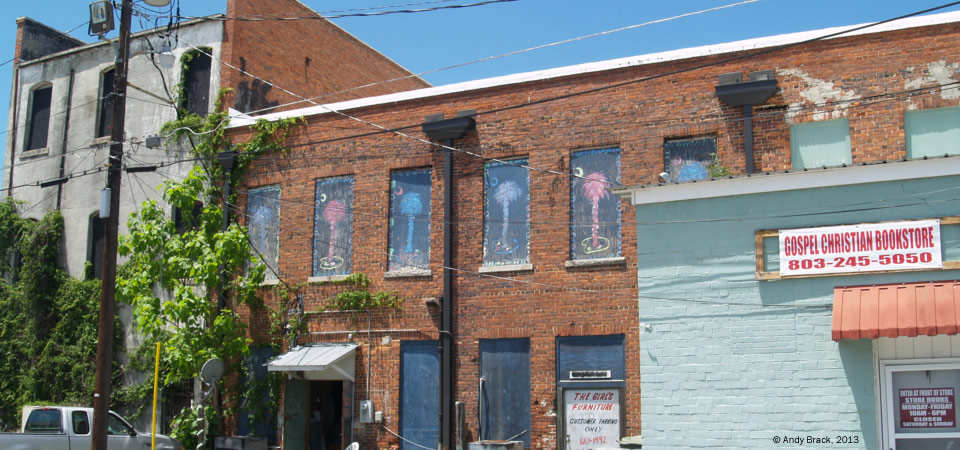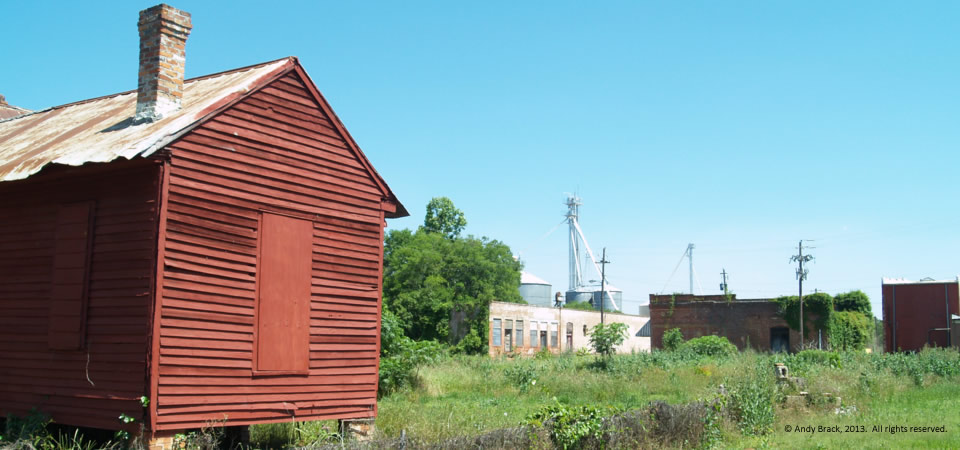
With a decaying old — but recently painted — building in the foreground, you can see an abandoned brick warehouse and a peanut business in the background of this photo of the small Calhoun County town of Leary.
Leary, which had 610 people in the 2010 Census (56 fewer than 10 years earlier) is predominantly poor and black. Three in four residents are black. Some 36 percent of the people in Calhoun County live at or below the poverty line, according to the 2010 Census.
There’s not a lot of businesses in Leary. Its train depot is closed. Across the street from a busy convenience store is a full city block of deserted businesses and homes. More than anything, Leary seems old and tired with little hope of a prosperous future. Notes photographer Michael Kaynard, “The downtown area had been deserted and the jail, post office and other businesses moved away and followed the highway.” Other than the store, the only thing that appeared to have some activity was the peanut plant, which operates seasonally.
- More on Leary from Wikipedia
- Census QuickFacts on Calhoun County
- More photos of Leary from Vanishing South Georgia
Photo by Andy Brack of the Center for a Better South, May 2013. All rights reserved.
